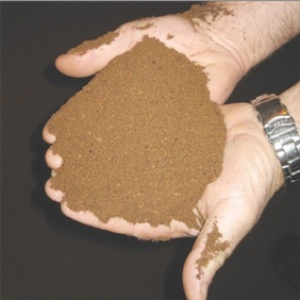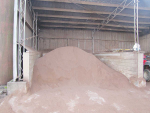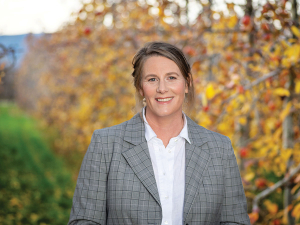BOUGHT-IN FEED costs are a major influence on farmgate margins in many dairy exporting regions, and are a key driver of global dairy supply.
After year-long downgrades, recent estimates put the Australian 2014-15 wheat crop at about 23m t (Rabobank) to 25m t (USDA), compared to an estimated 27m t last year. This is a sobering trend, but exposure to international grain markets has given Australian dairy farmers some relief, as expectations of good global feed grain availability have depressed global markets since September.
While good overseas supplies may help lessen the pressure on domestic feed grain stocks by lowering the prices exporters are willing to pay, they may also support continued strength in northern hemisphere milk production.
The US is the ‘poster child’ for production systems driven by intensive feeding. According to University of Wisconsin data, bought-in feed accounted for, on average, 52% of total input costs for Californian dairy farms between 2006 and 2010. CBOT December corn futures rose during October, but with harvest underway they remain relatively low, supporting milk:feed price ratios in favourable territory even as milk prices come under threat from falling commodity values. Consequently, a strengthening supply response is being observed in the US, with September data from the USDA indicating milk production 4% higher than September 2013; bringing year-to-date growth to 2%. Abundant feed grain will help the US industry in the face of intensifying dairy commodity-driven headwinds, likely keeping production strong into the first half of 2015.
By its very nature, the European industry is much more diverse: bought-in feed costs for the top five milk producing states range from 25% of operating costs (Poland) to at least 50% (Italy). Feed expenses thus represent a big chunk of operating costs – and falling grain prices are helping cushion margins. European milk production is now expected to reach a record 151 million tonnes (up 4%) in 2014, despite the impact of falling dairy commodity markets beginning to reach the farmgate. The USDA revised expected EU wheat production up 3m t to 154m t in October (compared to 143m t last year), and cheap grain continues to come out of France. Upward pressure is emerging however: international benchmark grain prices have risen in recent weeks, and UK Nov 14 feed wheat futures have followed suit. The Black Sea wheat crop is generally thought to be much smaller than expected, also reducing grain available for export from the region.
Generally recognised as representing ‘the other end’ of the scale, net feed ‘made, purchased or cropped’ represented only 20% of a typical New Zealand farm’s working expenses in 2011-12 (DairyBase), suggesting an even smaller share for bought-in feed alone. New Zealand relies on international grain markets, producing about 1m t of grain annually, and importing 300,000-450,000 t, plus palm kernel expeller meal for use in stock feed (MPI). Given the seasonal nature of most New Zealand production systems, world grain price fluctuations are most relevant to whether purchases of supplementary feed will prove economic later in the season, or whether unfavourable weather will trigger early dry-off of herds. With a farmgate milk price forecast of $5.30/kgMS – and most analysts tipping this will fall further – the economics are less likely to stack up in 2014-15. At about 5% growth to September, milk production growth in New Zealand has so far outpaced earlier expectations. However, a slight lessening in the pace is still expected, with full season forecasts in the range of 3-4% growth, relative to 2013-14.
Back home, data from the Victorian dairy farm monitor project shows average spending on grains, concentrates and other feeds accounted for 29% of cash costs during 2013-14, demonstrating the potential for a spike in grain prices to impact on margins. Milk production is currently about 3% above last year in data to September, however deteriorating seasonal conditions are increasingly likely to weigh on production heading into summer.
In particular, dry conditions in southwest Victoria are already undermining pasture production and cutting into crop yield potential. Feed prices remain a challenge in northern Australia, however yields and quality of early harvested grains have generally been acceptable, while sorghum planting will be supported if rains forecast for early November eventuate.
• Amy Bellhouse and John Droppert are analysts with Dairy Australia.











